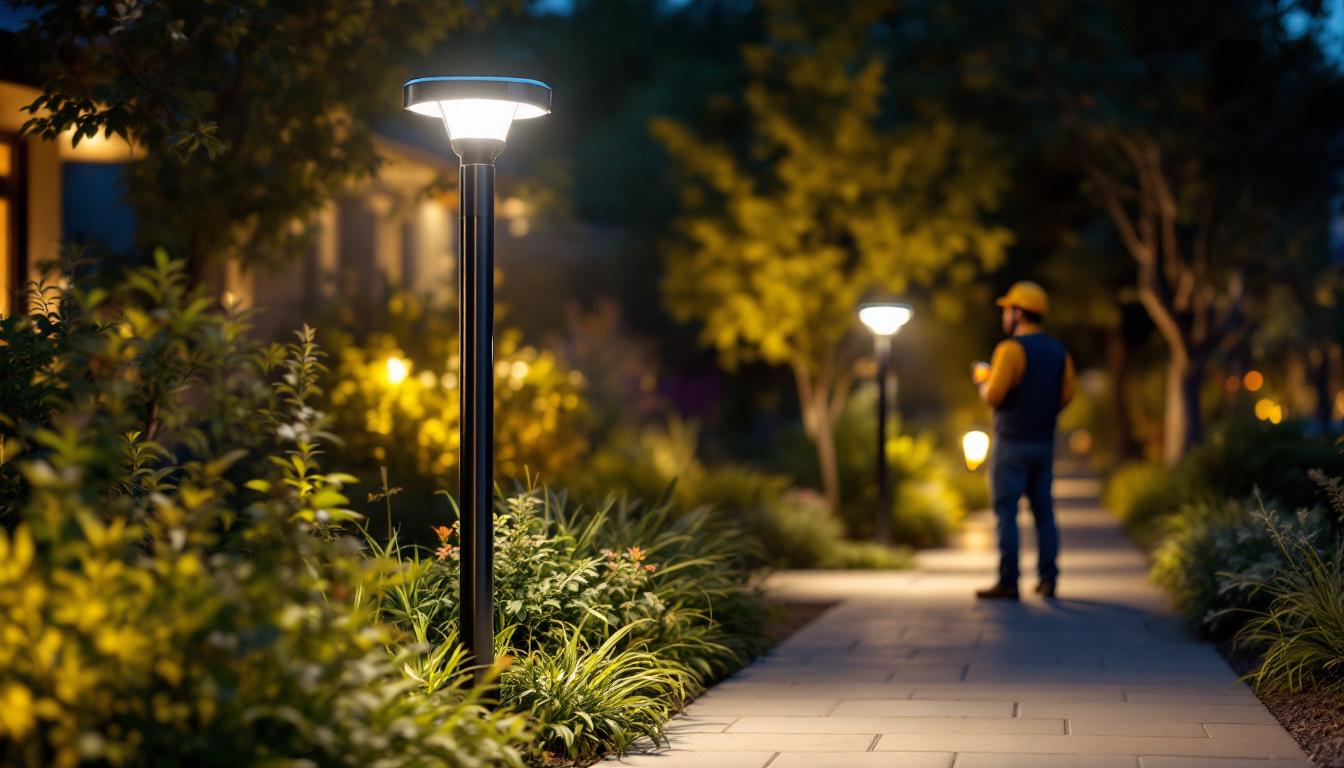
LED can trims have become a staple in modern lighting projects due to their energy efficiency, sleek design, and long lifespan. However, for lighting contractors, installing and specifying these fixtures comes with its own set of challenges. Unlike traditional incandescent or fluorescent trims, LED can trims require a deeper understanding of electrical compatibility, heat management, and aesthetic integration.
One common issue contractors face is the compatibility between LED can trims and existing housings. Many older housings were designed for different bulb types and wattages, which can lead to improper fit or performance issues when retrofitting LEDs. This mismatch can cause flickering, reduced light output, or even premature failure of the trim. Additionally, the physical dimensions of LED trims can vary significantly from their predecessors, necessitating careful measurement and planning to ensure a seamless installation.
Another challenge involves heat dissipation. Though LEDs generate less heat than traditional bulbs, the heat they do produce needs to be managed effectively. Poor heat management can shorten the lifespan of the LED chip and driver, leading to costly callbacks and dissatisfied clients. Contractors must be vigilant about ensuring that the housing is well-ventilated and that the LED trim is compatible with the thermal characteristics of the fixture. This often requires a thorough understanding of the specific products being used and may involve consulting with manufacturers to ensure optimal performance.
Moreover, the aesthetic integration of LED can trims into various design schemes presents its own set of hurdles. With a wide array of color temperatures and beam angles available, contractors must be adept at selecting the right options to match the desired ambiance of a space. This can be particularly challenging in commercial settings where lighting must not only be functional but also enhance the overall design ethos. The transition from traditional lighting to LED technology can also necessitate a shift in design philosophy, as the quality and direction of light can dramatically alter the perception of a room.
Finally, staying updated on the rapidly evolving LED technology landscape is crucial for contractors. New advancements in LED technology, such as smart lighting features and improved energy efficiency ratings, can significantly impact project specifications. As manufacturers continue to innovate, contractors must be proactive in educating themselves about the latest products and installation techniques to remain competitive in the market. This ongoing learning process can be time-consuming but is essential for delivering high-quality, reliable lighting solutions that meet both client expectations and industry standards.
Before selecting LED can trims, it’s crucial to evaluate the existing housings and electrical infrastructure. Many older housings are not designed to accommodate LED technology, especially those that require specific dimensions or driver types. Some LED trims come with integrated drivers, while others rely on external ones, so understanding the electrical setup is key.
Contractors should verify the voltage requirements and ensure the housing can handle the LED’s wattage and heat output. Using a non-compatible housing might not only reduce performance but could also void warranties or violate electrical codes. Furthermore, it’s advisable to inspect the insulation and airflow around the housing, as improper ventilation can lead to overheating, which can drastically shorten the lifespan of the LED trims. In some cases, retrofitting existing fixtures may be necessary to ensure optimal performance and safety, which can involve additional costs and time but ultimately leads to a more reliable lighting solution.
LED can trims come in a variety of sizes, beam angles, color temperatures, and dimming capabilities. Selecting the right trim means balancing the client’s aesthetic desires with functional needs. For example, a narrow beam angle is ideal for accent lighting, while a wider beam suits general illumination.
Additionally, contractors should consider trims with adjustable color temperature to provide flexibility in different spaces. This is especially important in commercial settings where lighting needs may vary throughout the day. For instance, a cooler color temperature may be more suitable for a workspace during the day to enhance focus and productivity, while a warmer hue can create a more relaxed atmosphere in the evening. Moreover, the integration of smart technology into LED trims allows for advanced control options, enabling users to adjust brightness and color settings via smartphone apps or voice commands, further enhancing the adaptability of the lighting system to meet diverse needs.
While LEDs are more efficient than traditional bulbs, they still produce heat that must be dissipated to maintain performance. Heat buildup inside the can housing can degrade the LED chip and driver, leading to early failure. This is particularly critical in applications where the lights are used for extended periods, as prolonged exposure to high temperatures can significantly shorten the lifespan of the components.
Contractors should look for LED trims designed with effective heat sinks and ventilation. Some trims incorporate aluminum heat sinks or thermal pads to draw heat away from sensitive components. Additionally, the design of the fixture itself can impact heat management; for instance, fixtures that allow for airflow can help to mitigate heat accumulation. Understanding the thermal characteristics of the environment where the LEDs will be installed is also crucial, as ambient temperature can affect the overall performance and longevity of the lighting system.
Proper installation plays a vital role in heat management. Ensuring that the housing has adequate clearance and ventilation is essential. Avoiding insulation contact with the trim, unless it is rated IC (insulation contact) type, prevents overheating. It is also advisable to use non-combustible materials around the housing to further enhance safety and efficiency.
Contractors should also be mindful of the total wattage in a single ceiling cavity. Overloading a space with multiple high-wattage LED trims can lead to excessive heat buildup, so spacing and wattage calculations are important considerations. Furthermore, utilizing dimmers or smart controls can help manage energy consumption and reduce heat generation during periods of lower light demand. Implementing these strategies not only improves the performance of the lighting system but also contributes to energy savings and a reduced environmental footprint.
Dimming LED can trims can be tricky. Many older dimmer switches are incompatible with LED technology, resulting in flickering, buzzing, or limited dimming range. This can frustrate both contractors and clients.
Lighting contractors must be proactive in selecting dimmers that are specifically designed for LED loads. Compatibility charts from manufacturers are invaluable tools to ensure smooth operation.
Smart lighting controls are becoming increasingly popular, offering energy savings and enhanced user experience. However, integrating LED can trims with smart systems requires careful planning.
Contractors should verify that the LED trims support the desired control protocols, such as 0-10V, DALI, or Zigbee. Testing the system before final installation can prevent costly troubleshooting later.
Color temperature and Color Rendering Index (CRI) are critical factors in lighting design. LED can trims with low CRI can make spaces look dull or unnatural, which is unacceptable in retail or hospitality environments.
Contractors should specify trims with a CRI of 90 or above for spaces where color accuracy matters. Consistency in color temperature across multiple trims also ensures a cohesive look.
The beam spread of LED can trims affects both the ambiance and functionality of a space. Narrow beams create focal points, while wide beams provide even illumination. Choosing the right beam angle can reduce shadows and glare.
Glare control is another important consideration. Some LED trims come with baffles or lenses designed to minimize direct glare, enhancing visual comfort for occupants.
Clients often expect LED upgrades to be a simple swap with immediate benefits. While LEDs do offer energy savings and longevity, contractors should clearly explain potential challenges such as upfront costs, dimmer compatibility, and installation nuances.
Setting realistic expectations helps build trust and reduces the likelihood of dissatisfaction down the line.
Though LED can trims require less maintenance than traditional lighting, they are not maintenance-free. Contractors should advise clients on cleaning, periodic inspections, and what to do if flickering or dimming issues arise.
Offering maintenance contracts or follow-up services can also create ongoing revenue streams and strengthen client relationships.
The LED lighting industry evolves rapidly, with new products and standards emerging frequently. Lighting contractors who invest in ongoing training and certification are better equipped to tackle challenges and provide superior service.
Manufacturers often offer training sessions and webinars that cover installation techniques, troubleshooting, and product updates. Staying informed helps contractors avoid costly mistakes and enhances their reputation.
Modern lighting design software can simulate LED performance, helping contractors visualize beam spreads, color temperatures, and energy consumption before installation. These tools aid in precise specification and client presentations.
Additionally, diagnostic tools that measure voltage, current, and dimmer compatibility can streamline troubleshooting on-site, saving time and reducing callbacks.
LED can trims offer many advantages, but they demand a thoughtful approach from lighting contractors. By understanding compatibility issues, managing heat effectively, selecting the right controls, and maintaining aesthetic quality, contractors can deliver outstanding results.
Clear communication with clients and continuous professional development further empower contractors to overcome challenges confidently. In doing so, they not only enhance project success but also position themselves as trusted experts in the evolving lighting landscape.
Ready to tackle your next lighting project with confidence? At LumenWholesale, we provide lighting contractors like you with the highest quality, spec-grade LED can trims and more, all at unbeatable wholesale prices. Say goodbye to middleman markups and hello to a vast selection of reliable, high-performance lighting that meets rigorous industry standards. With the added convenience of free shipping on bulk orders, you can ensure your projects shine without the worry of hidden fees. Elevate your lighting game and take advantage of the best value in wholesale lighting by visiting LumenWholesale today.

Discover expert insights from lighting contractors on selecting and installing flush ceiling light fixtures.

Discover the essential facts about recessed trim rings that every lighting contractor needs to know.

Discover expert tips and insights on indirect lighting tailored for lighting contractors.

Discover how solar lamp pole mounts are revolutionizing the lighting industry, offering contractors sustainable, cost-effective solutions.